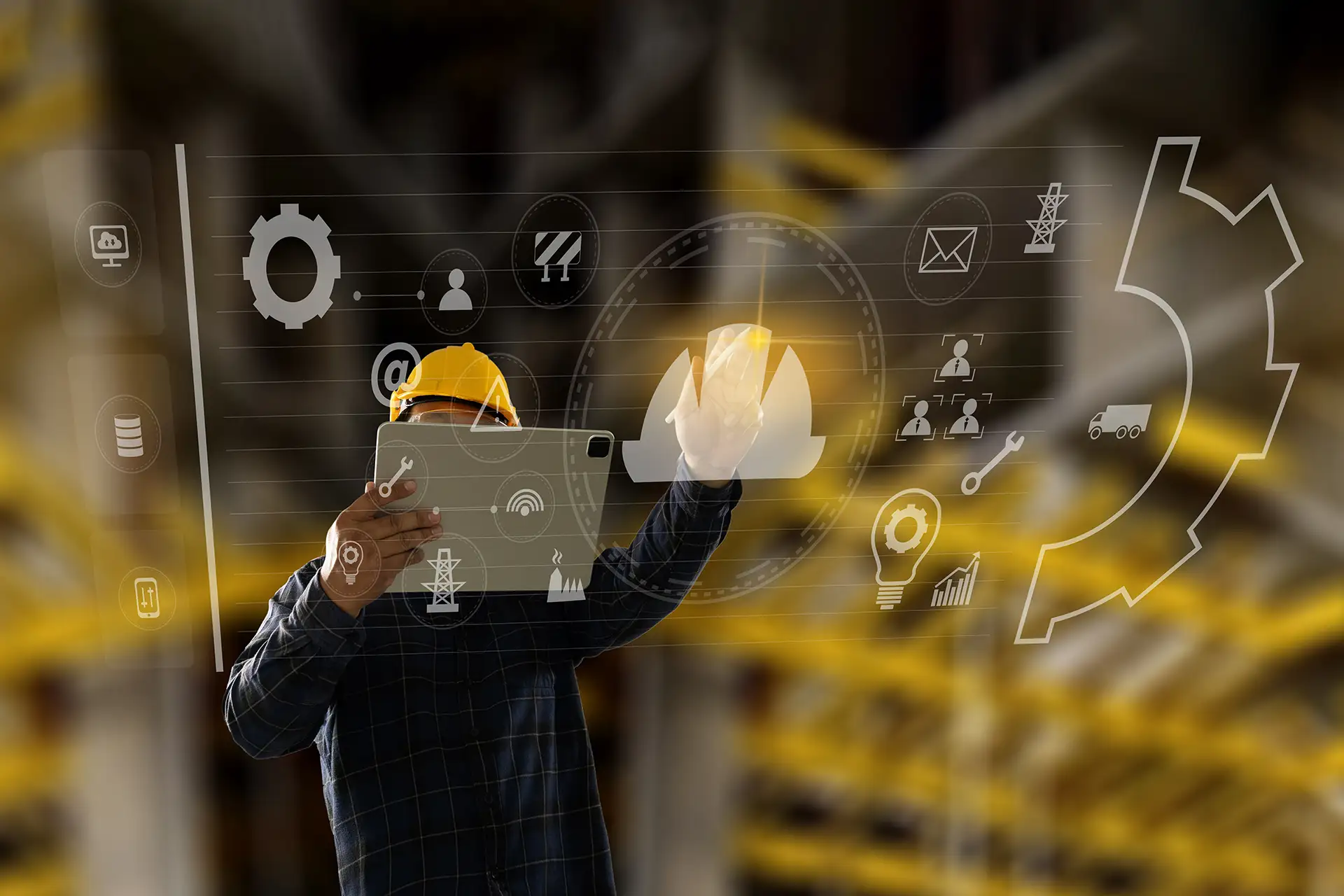
Last updated on June 13th, 2024
Everywhere you look, there’s an article discussing how artificial intelligence (AI) is transforming construction.
Once reserved for the largest commercial construction businesses, AI solutions are evolving and becoming more accessible to businesses of all sizes. Here’s an overview and some tips on how to get started using AI in your business.
AI is software that analyzes a variety of data to help you achieve better results. AI can provide you with insights and information to make strategic decisions, make work easier through automation, and identify potential issues before they escalate. AI systems are impartial, promoting accuracy while minimizing bias, and ultimately boosting productivity and performance.
So, how can you use AI in your construction business?
Before construction.
There are AI software solutions to help with everything from bidding, contracts, regulations, building codes, and permits to project planning, supply chain, and more. Use them to operate more effectively and enhance the value you offer potential clients.
During construction.
Robotic bricklayers, layout, welding, autonomous equipment, and drones do certain jobs so staff is freed up to focus on other work. Using data from past projects, workflow related to activities like rebar placement can be simplified and maximized for productivity. Sensors and cameras can alert crews to safety hazards, detect defects and weaknesses, and boost quality. Predictive maintenance extends the longevity of equipment.
Backroom operations.
Think of any business activity and you can likely find an AI solution to do it faster and more accurately. For example, AI integrated with an ERP may help reduce days sales outstanding; find and fix billing errors; and detect anomalies and potential fraud. There are AI systems that evaluate market opportunities, help strengthen sales, improve customer service, and streamline project management.
Staffing
Yes, this is part of backroom operations but considering today’s challenges finding experienced talent, it warrants its own discussion. AI solutions can boost the effectiveness of your recruiting and hiring process. Perhaps equally important is that AI solutions allow you to use the staff you do have effectively. Instead of paying someone for simple repetitive tasks on a work site or in an office (i.e., data entry, order tracking, invoicing, and more), AI can automate and free up staff (or your budget for staff) to focus where they can add the most value.
With one study predicting up to 30% of construction work will be automated by 2030, it’s the right time to explore opportunities for your business.
Start by thinking about your biggest “pain points.” What is constantly causing you angst, creating problems, or diverting attention and resources from more important tasks? What is costing your business money, time, employees, suppliers, and/or customers? What are customers or potential customers asking for that you just can’t deliver…yet?
Ask your team for input and to validate the top two to three pain points. Then, research AI systems that can help. Industry organizations, peers, people you work within the business (including suppliers and insurance agents, for example), and, of course, the Internet can help you identify potential solutions.
Don’t settle on the first AI system you find. There is a growing list of options and features available. You may want to explore three to five AI systems and compare their features and costs. Once you make a decision to move forward, be ready for some growing pains including testing and training. After launching, monitor and make adjustments as needed.
As you focus on what’s best for your business’s future, let RBT CPAs focus on you. Our business advisory, accounting, audit, and tax professionals are available to help support and drive success. We look forward to showing you how we can be Remarkably Better Together.
RBT CPAs is proud to say 100% of its work is prepared in America. Our company does not offshore work, so you always know who is handling your confidential financial data.
